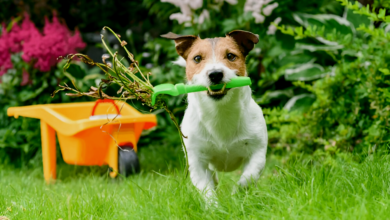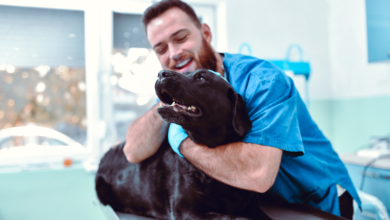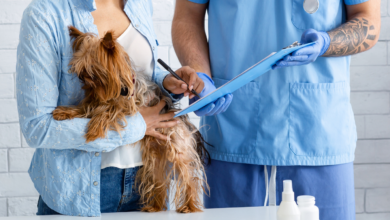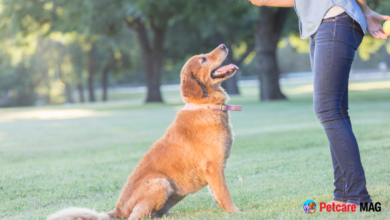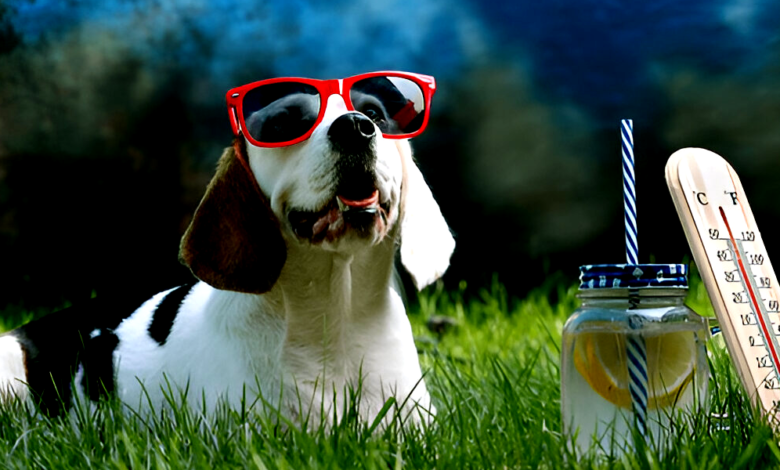
Heatwaves & Pets: Keeping Your Furry Friend Cool in Summer
As temperatures rise during the scorching summer months, it is essential to focus on the well-being of our furry companions to ensure they remain comfortable
As temperatures rise during the scorching summer months, it is essential to focus on the well-being of our furry companions to ensure they remain comfortable and safe. Heatwaves can pose serious health risks to pets, including heat exhaustion, dehydration, and even heatstroke, which can be fatal if not promptly addressed. Unlike humans, pets have limited means to regulate their body temperature, making them more vulnerable to extreme heat. As responsible pet owners, it is crucial to take proactive measures to keep our animals cool, hydrated, and comfortable throughout the hot season.
Understanding the risks associated with high temperatures and implementing appropriate preventive measures can significantly enhance your pet’s quality of life during summer. From ensuring proper hydration and shade to modifying exercise routines and recognizing early signs of heat-related illnesses, pet owners must be well-equipped with knowledge and strategies to protect their beloved companions. This article explores practical ways to safeguard pets from summer heat, offering insights into cooling techniques, hydration tips, dietary considerations, and emergency responses to heatstroke. By following these guidelines, pet owners can ensure their furry friends stay healthy, happy, and cool even on the Heatwaves days.
Heatwaves & Pets
Understanding How Heat Affects Pets
Heat affects pets differently than humans due to their unique physiology. Dogs and cats do not sweat as humans do; instead, they regulate their temperature through panting and limited sweat glands in their paw pads. Brachycephalic (short-nosed) breeds, such as Bulldogs and Pugs, face even greater challenges as their shortened airways make it difficult to cool down effectively. Similarly, older pets, overweight animals, and those with pre-existing health conditions are more susceptible to heat-related complications. Understanding these differences is key to implementing effective cooling strategies.
Heatstroke is one of the most severe consequences of prolonged exposure to high temperatures. This condition occurs when an animal’s body temperature rises beyond its normal range, leading to symptoms such as excessive panting, drooling, lethargy, vomiting, and collapse. Without immediate intervention, heatstroke can lead to organ failure and death. Knowing the warning signs and acting swiftly can save a pet’s life. Recognizing when a pet is overheating and responding accordingly is vital to ensuring their safety during extreme weather.
Creating a Cool Environment for Your Pet
One of the most effective ways to protect pets from heatwaves is by ensuring they have access to a cool and comfortable environment. If possible, keep pets indoors during peak heat hours, typically between 10 a.m. and 4 p.m. Air conditioning and fans can help regulate indoor temperatures, providing a safe retreat from the heat. If air conditioning is unavailable, placing cooling mats or damp towels on the floor can offer additional relief.
For outdoor pets, shaded areas are a must. Trees, umbrellas, or pet-specific sun shelters can provide much-needed relief from direct sunlight. Placing cool water bowls around the yard encourages hydration, and adding ice cubes can keep the water temperature low for extended periods. Additionally, setting up a small wading pool for dogs to splash in can help them cool off effectively while also providing some entertainment.
Ensuring Proper Hydration
Hydration plays a critical role in keeping pets safe during hot weather. Pets should always have access to fresh, cool water throughout the day. Dehydration can set in quickly, leading to symptoms such as dry gums, sunken eyes, excessive panting, and lethargy. Encouraging pets to drink more water can be done by using water fountains, flavoring water with pet-safe broth, or offering ice treats.
Wet food can also contribute to a pet’s hydration levels. Incorporating wet food into their diet or soaking dry kibble in water before feeding can help maintain adequate fluid intake. Additionally, pet-friendly electrolyte solutions can be useful in cases of mild dehydration, but owners should consult a veterinarian before administering any supplements.
Adjusting Exercise and Outdoor Activities
Exercise is essential for a pet’s well-being, but during summer, it is crucial to modify activity routines to prevent overheating. Walking dogs during early mornings or late evenings when temperatures are lower reduces the risk of heat-related issues. Avoiding hot pavement and asphalt is also important, as these surfaces can burn a pet’s paw pads. Testing the ground with the back of the hand for a few seconds can determine if it is too hot for a pet’s paws.
Swimming is an excellent alternative to traditional exercise during summer. Many dogs enjoy playing in water, and supervised swimming sessions can help them stay active while keeping cool. However, pet owners should ensure their pets are comfortable in the water and always monitor them closely to prevent accidents.
Grooming and Coat Care
Proper grooming is essential for helping pets stay cool. While it may be tempting to shave a pet’s fur during summer, this is not always advisable. A pet’s coat serves as insulation, protecting them from both heat and sunburn. Instead of shaving, regular brushing helps remove excess fur and allows better air circulation. For long-haired breeds, trimming the fur to a manageable length can provide some relief without exposing their skin to harmful UV rays.
Some pet-safe cooling products, such as cooling vests and bandanas, can provide additional relief. These items are designed to retain moisture and gradually cool the pet as the water evaporates. Using pet-safe sunscreen on exposed areas, such as the nose and ears, can prevent sunburn, particularly for pets with light-colored fur.
Recognizing and Responding to Heatstroke
Recognizing the early signs of heatstroke is crucial for preventing severe complications. Symptoms include excessive panting, drooling, weakness, vomiting, diarrhea, and collapse. If a pet exhibits any of these signs, immediate action is required.
To cool a pet down, move them to a shaded or air-conditioned area and offer cool (not ice-cold) water. Wetting their fur with cool water, particularly on the belly, paws, and armpits, can help lower body temperature. Using fans to increase airflow around the pet is also beneficial. However, seeking veterinary attention as soon as possible is essential, as heatstroke can lead to severe internal damage.
Read More: Winter Pet Care in the UK: How to Keep Pets Warm & Safe
Conclusion
Keeping pets safe during heatwaves requires vigilance and proactive care. By ensuring access to cool environments, maintaining hydration, adjusting outdoor activities, and recognizing early signs of heat-related illnesses, pet owners can significantly reduce the risks associated with extreme heat. Every pet is different, so understanding their specific needs and responses to high temperatures is essential. By implementing these strategies, you can provide a comfortable and safe summer for your furry friend, ensuring they remain happy and healthy even in the hottest weather.
FAQs
Q: How can I tell if my pet is overheating?
A: Signs of overheating include excessive panting, drooling, lethargy, vomiting, and disorientation. Immediate action is necessary to cool them down and prevent heatstroke.
Q: Can I leave my pet outside during a Heatwaves?
A: It is not advisable to leave pets outside during extreme heat. If they must be outdoors, ensure they have access to shade, cool water, and a well-ventilated shelter.
Q: Is it safe to take my pet for a walk on hot days?
A: Walking pets during peak heat hours can be dangerous. It is best to walk them in the early morning or late evening when temperatures are lower and to avoid hot pavement.
Q: What is the best way to keep my pet hydrated?
A: Providing fresh, cool water at all times, offering wet food, and using pet-safe hydration solutions can help maintain hydration levels.
Q: Are certain pets more at risk of heat-related illnesses?
A: Yes, brachycephalic breeds, older pets, overweight animals, and those with health conditions are at higher risk. Extra precautions should be taken to keep them cool.



